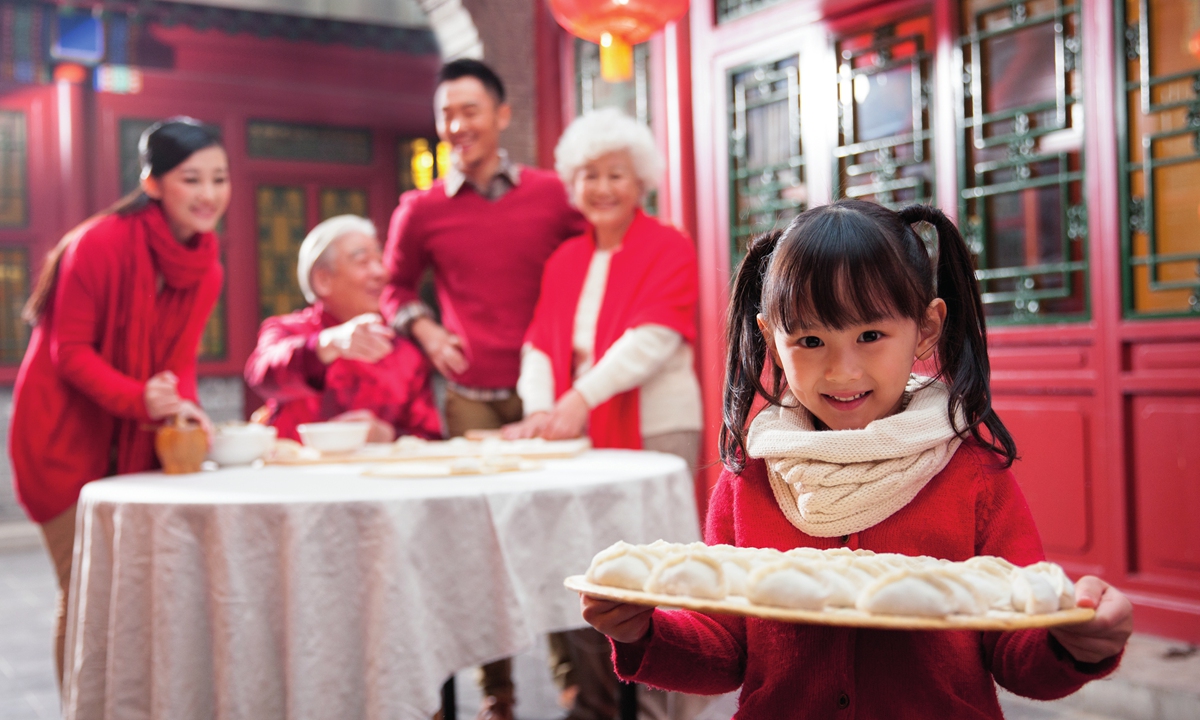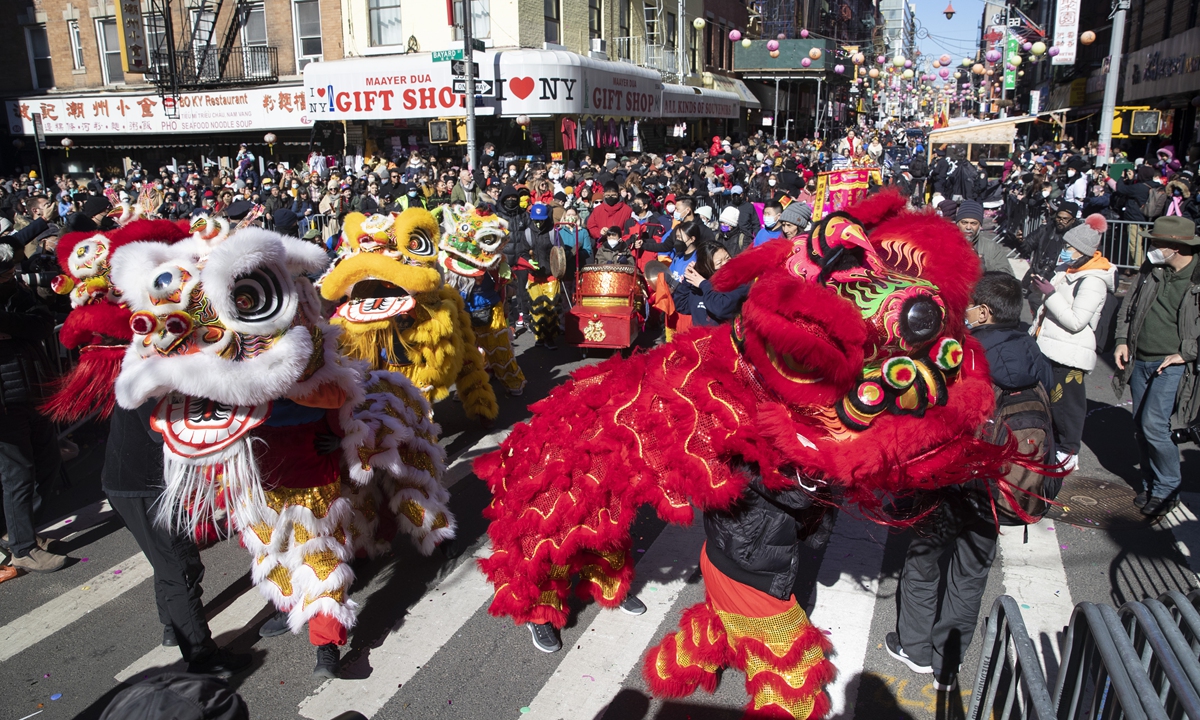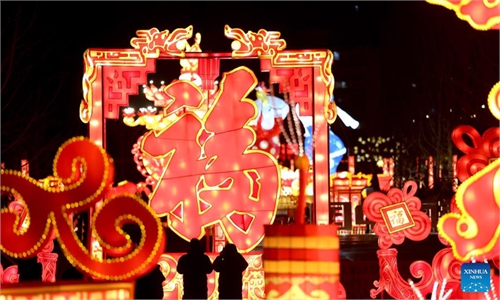
Photo: VCG
Editor's Note:
The Spring Festival is one of the most important holidays on the Chinese calendar. People living in China and around the world are looking forward to embracing the holiday with their hopes for a better future, especially at a time when the world is recovering from the COVID-19 pandemic.
With a history of more than 2,000 years, the Spring Festival, or chunjie, is still celebrated by billions of people. The festival has been continuously enriched by the many ethnic groups in China, evolving over the centuries to finally become a common festival for the Chinese nation.
Starting from neighboring countries like the Koreas and Japan, the Spring Festival followed in the footsteps of cultural exchanges, growing to become an important part of East Asian culture. Thanks to China's economic and cultural strength, the Spring Festival is now becoming a symbol of global culture.
In this three-issue series, the Global Times will explore and present the Spring Festival today and how it is becoming a global festival full of vitality.
Close to noon on Monday in central Beijing, Yonghegong, or the Lama Temple, one of the most famous ancient compounds in Beijing, was surrounded by visitors with "a mission" to make a wish for their family and friends ahead of the Spring Festival and the upcoming Year of the Rabbit.
The unique scent of the burning sandalwood could be smelled even 200 meters away, a demonstration of the popularity of the famous temple complex as a Spring Festival destination.
"I'm here to pray for the good health of my little sister. It's going be her 'year of fate' since she was born 12 years ago in the last Year of the Rabbit," Zou Yan, a visitor lining up outside the temple, told the Global Times on Monday.
Zou had taken a day off from work and waited in line for over two hours just to buy a red rope bracelet for her sister.
"It's all worth it because tradition is important for us as a family."
One of the most widely celebrated festivals around the world, the Spring Festival is experiencing an incredible rebound among Chinese who yearn to reunite with family now that the country has optimized its COVID-19 prevention and control measures in early December.
Although celebrated differently across the country, this ancient festival that gathers 1.4 billion people together is looked forward to by all Chinese, Beijing-based Chinese culture folklorist Zheng Nan told the Global Times.
"At the end of one year, we hope for peace, prosperity, unity and inheritance for the year to come."
Building anticipation
Stories about the origins of this thousands-year-old festival have varied from generation to generation, but the core significance of the festival has roughly remained the same: a desire for a good "harvest" in the coming year.
"The origin of the Spring Festival and the following series of celebrations are actually closely related to the highly developed ancient Chinese calendar and the progress of farming in China," noted Zheng.
Based on records in the Erya - which is considered to be the world's most ancient single language dictionary - experts surmise a mature calendar formed as early as the Neolithic Age in China. This calendar was improved upon over the centuries, finally becoming set during the Han Dynasty (202BC-AD220).
"The 24 solar terms in the ancient Chinese calendar show that our ancestors grasped the laws of nature and arranged farming activities based on this. Therefore, the Spring Festival became a symbol of the connection between the previous year's harvest and the new year's sowing," Zheng said.
This connotation is also reflected in the Spring Festival customs and nursery rhymes across the country.
From the festival activities of grounding tofu to making special bacon, people's emphasis on food reflects the foundation of Chinese people and nature in the farming civilization.
"The Spring Festival fully embodies the Chinese people's closeness to nature, concerns for life and desire for human companionship," noted Zhong Fulan, a professor of folklore at East China Normal University.
"This is a manifesto of the Chinese world view of harmony between man and nature." Even though the Gregorian calendar was later introduced to China, the two did not conflict with each other, but actually complemented each other.
"We now celebrate the New Year and then the Spring Festival, reflecting the inclusive nature of the culture our ancestors have created," Zheng noted.
"When the midnight bell is rung, our family come together and eat dumplings with a coin hidden in one of them," 26-year-old Qi Cha from Dalian, Northeast China's Liaoning Province, told the Global Times.
Hiding a coin in a dumpling is considered as one of the Spring Festival's "supreme courtesies" in some places and, as the tradition goes, the lucky family member that finds the coin will be blessed for the rest of the year.
Dumplings are one of the most common dishes in the northern part of China, where wheat is commonly grown.
By contrast, niangao (New Year cake made of sticky rice) is an indispensable part of most southern families' meals.
China's various customs can be seen in the different ways people celebrate the festival, for instance seafood appears on tables in coastal cities in East China's Fujian Province and in Southwest China's Yunnan Province, Nu ethnic group sing traditional folk songs and enjoy local hot pot when celebrating the festival.
"We should not see the celebration as single festival of the Han ethnic group but a multi-ethnic one," Chen Ganglong, a folklorist from Peking University, once noted on Chinese Central Television.
"With the development of the economy and culture, the customs of the Spring Festival are not only integrated in all parts of China, but also with neighboring countries and people on the other side of the ocean," Zheng said.





